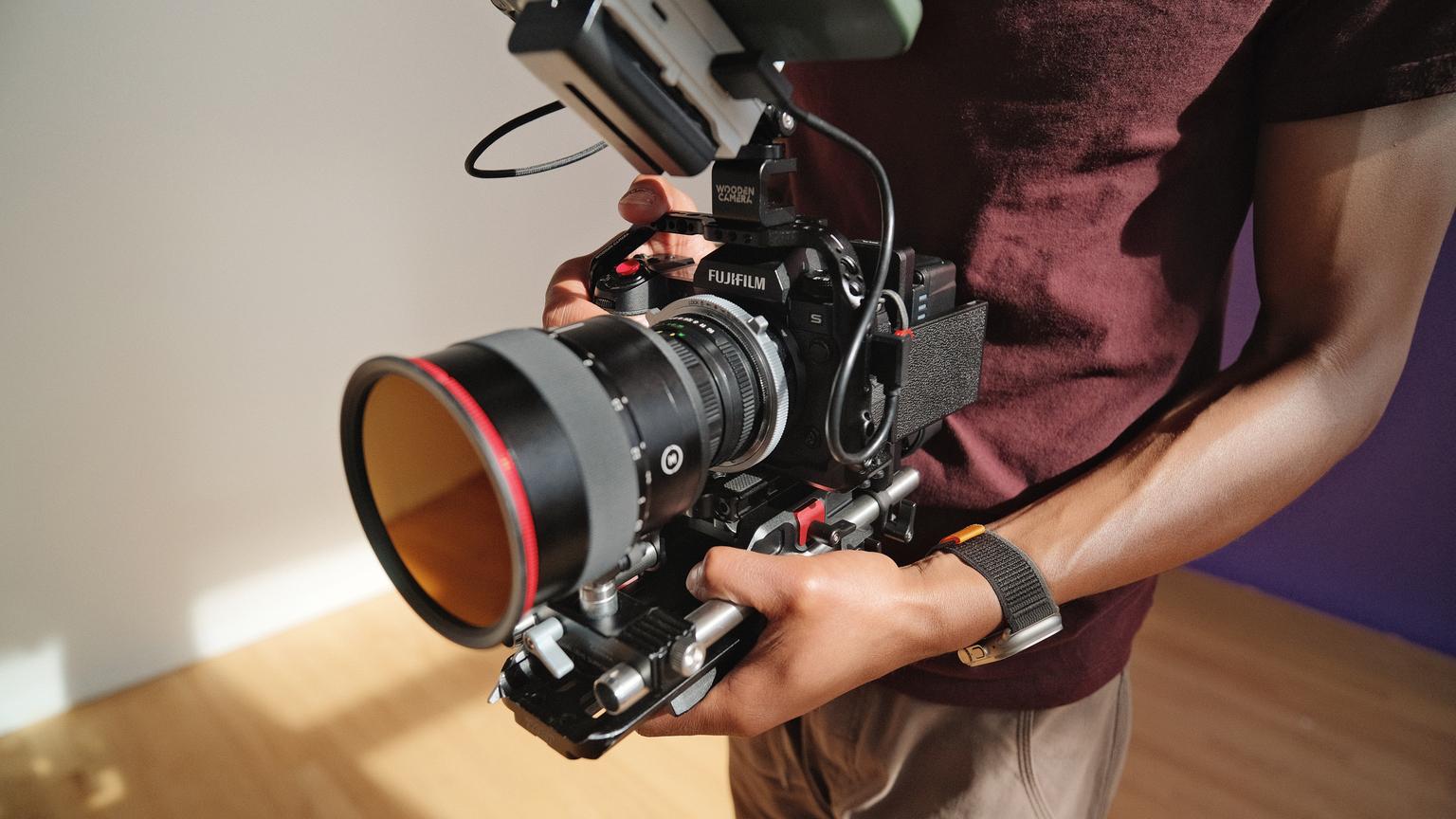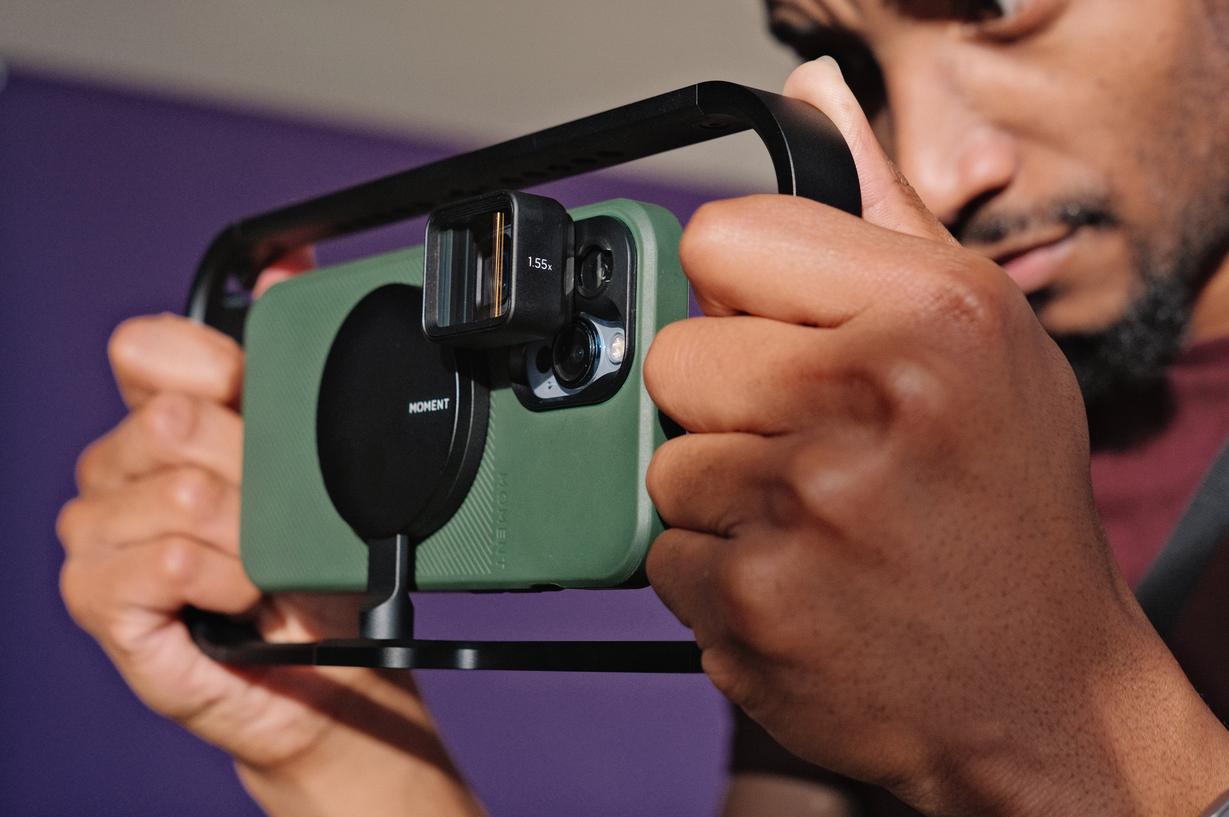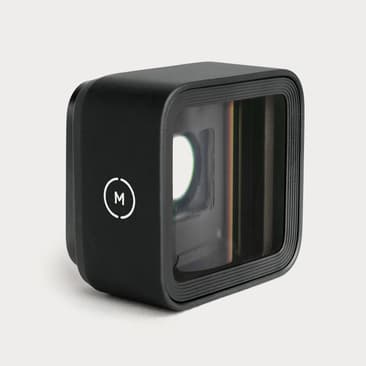Anamorphic Lenses 101 | Everything You Need To Know
Stepping into the world of cinema is easier than ever. Here's your one-stop guide to understanding the world of Anamorphic & how to get started with your gear.

Do you ever notice how visually enthralling the latest motion pictures are at your local theater? The explanation behind that yummy cinematic footage you love most about Hollywood blockbusters points to one primary culprit — Anamorphic lenses.
An anamorphic lens squeezes the image onto film or digital camera sensors, allowing for wider aspect ratios than would otherwise be possible with traditional lenses and results in more cinematic images with shallower depth-of-field and an oval bokeh effect. This makes them ideal for filmmakers who want to create a high-end, cinematic look without having to crop their shots.
Let’s discuss what makes the technical aspects behind anamorphic lenses so unique, their variety, and gear to help you get started in the world of true cinema.


Anamorphic vs. Spherical Lenses
Utilizing anamorphic lenses for filming allows for a wider field of view and produces a more immersive aspect ratio of 2.39:1. These lenses compress the image horizontally, meaning that filmmakers can capture wide-angle shots with standard-sized-sensors while still achieving a unique and distinct look. Anamorphic lenses have the added benefit of producing oval-shaped bokeh and fewer aberration issues than spherical lenses. Most importantly, they create images with a recognizable horizontal stretch effect.
Cinematographers using spherical lenses can capture images in the traditional format with no perspective distortion or close magnification, allowing them to achieve a shallow depth of field with prime lenses. However, while zooms offer a wider range of shots, they tend to produce a less shallow depth of field than prime lenses. In addition, these spherical lenses are typically prone to chromatic aberration and round bokeh.


What Is 'Aspect Ratio'?
An aspect ratio describes the proportion between the width and height of an image. This is especially important when creating digital video content since different ratios can affect how the scene looks on the screen.
These lenses are used to compress the width of an image, making it appear narrower than it would with a more standard widescreen lens. This allows for more of the picture to be taken vertically than would be attainable through a normal aspect ratio. Anamorphic lenses are commonly employed to add extra visual interest and composition to images that wouldn't be possible through conventional lenses.

1.33x vs. 1.55x Anamorphic | Ratios, Specs, Focal Lengths, & Effects
What's an aspect ratio & what's the difference between 1.33x vs 1.55x? Let's discuss the differences and how to use our mobile anamorphic lenses and adapters.
Aspect Ratios for Anamorphic Lenses
If you're a filmmaker looking to make use of an anamorphic lens, you have three main aspect ratio choices: 1.33x (also known as "Scope"), 2.35x (or "Ultra Panavision"), and 1.85x. These lenses will provide you with a wide angle of view along with the classic cinemascope-style distortion.
At Moment, we offer two different anamorphic ranges: 1.33x and 1.55x. But what are the differences between the two, and which one is right for you?
Using a 1.33x anamorphic lens gives filmmakers the benefit of preserving the scene's original aspect ratio and providing a wider field of view with just one camera. This lens compresses the frame's height while maintaining the image's width resulting in a letterbox effect. The image may appear squished when viewing it on a non-anamorphic monitor. However, this can be corrected post-production, and the original aspect ratio will be restored.
A 1.55x anamorphic lens creates a much wider image than a non-anamorphic lens, allowing filmmakers to capture wide shots without needing extra camera gear. However, this type of lens also compresses the image vertically at a higher ratio, which distorts the natural geometry of the scene and may cause barrel distortions. Additionally, when viewing the footage on a standard-size monitor, the widescreen image may be more 'pillar-boxed'. Despite this, many filmmakers find the larger ratio attractive due to its cinematic vibe.
To achieve that standard, true-to-life frame with minimal stylization or distortion — the 1.33x is your go-to choice. However, if you're looking for a more stylized, artistic barrel look to your footage, then the 1.55x is ideal. With its expansive field of view and intense multiplex feel, it's no wonder why many filmmakers prefer the 1.55x ratio.






Affordable Gear to Get Your Started
Moment's bread and butter is crafting high-quality yet affordable and accessible camera gear for photographers and filmmakers.
It's challenging to obtain a large arsenal of camera lenses, bodies, accessories, lights, audio, and film rolls at an affordable price while still getting the job done right. At Moment, we provide accessibly priced camera gear, third-party favorites, and comprehensive education through articles and Youtube videos to maximize your creativity.
Check out our Youtube channel for more videos on filmmaking gear, tips, and more. Below are additional articles detailing our fan-favorite 1.33xx Anamorphic Lens Adapter that turns any lens into a movie-making machine and our world-famous mobile anamorphic lenses in 1.33x and 1.55x ratios.

Moment
1.33x Anamorphic Lens Adapter
The Holy Grail of filmmaking at an attainable price! We bring the full Anamorphic look to your favorite lenses with our 1.33x Anamorphic Adapter.
Buy for $1,299.00
Moment
1.33x Anamorphic Mobile Lens - Gold Flare | M-Series
Buy the Moment M-Series 1.33x Anamorphic Lens with Gold Flare. It gives you bright blue flares and a 1.33x widescreen look on y our iPhone or Android phone.
Buy for $99.99
Moment
1.33x Anamorphic Mobile Lens - Gold & Blue Flare | T-Series
The 1.33x Anamorphic T-Series Lens is our most cinematic mobile anamorphic yet. With a 20% wider aperture compared with our M-Series family you can unleash t...
Learn More!

Portrait Photography With An Anamorphic Lens | 1.33x Moment Adapter
Updated on May 29, 2023
How does the new Moment Anamorphic Lens Adapter hold up for photographers? Professional photographer and film creative, Steven Schultz, tests the waters.

4 Easy Ways to De-Squeeze Anamorphic Footage
Updated on Aug 16, 2023
You asked, we answered. Read the 4 easy ways to de-squeeze anamorphic footage, including our Moment Camera Pro app.

Moment 1.55x Mobile Anamorphic Lens | Review & Example Footage
Updated on Aug 17, 2023
Wider Senes. Unique Bokeh. Classic Flares. It's the most cinematic your phone footage has ever looked.







